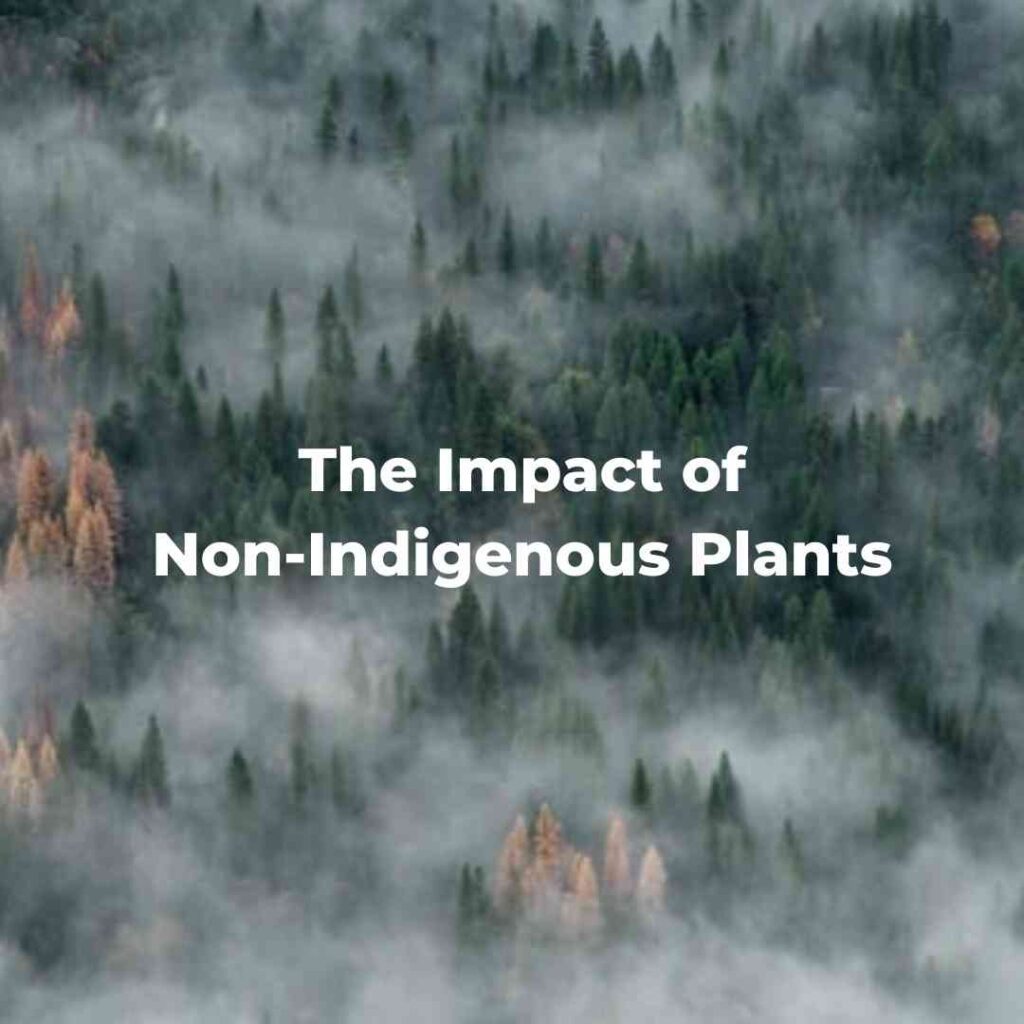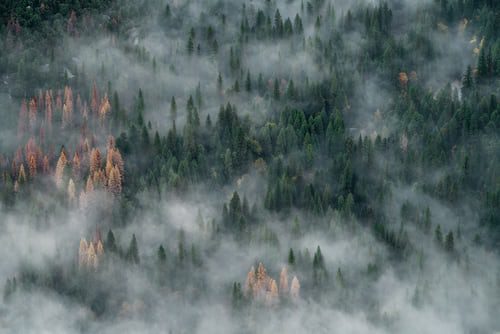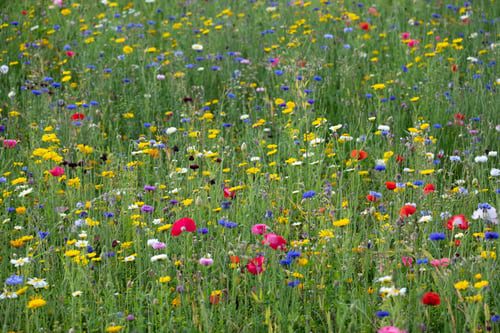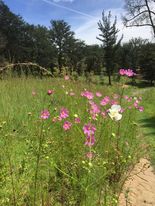
The Impact of Non-Indigenous Plants
Exotic and invasive plant species are, unfortunately, very popular in home gardens and decorative gardens around public spaces. Studies have shown that between 50% and 70% of invasive and non-native plant species were purposefully taken to their new homes by the horticultural trade.
The impact of invasive plant species is often overlooked as many are prized for their beauty, food production, and ability to create a certain ‘feel’ in a space. However, native plant species are just as, if not more, beneficial and don’t come with the negative environmental impact as a side effect.

The mass insect decline has a myriad of knock-on effects on the ecosystem, including a collateral insect-eating bird population decline which will further exacerbate the food-chain domino effect.

Invasive species alter natural environments by affecting light and temperature, as well as altering the risk and frequency of fires, the water table, and nutrient cycling. Non-native species change the micro-organisms in soils around them, in turn affecting the ability of native species to access soil nutrients.
Unimaginable amounts of non-native species have been introduced to new areas by colonisation, agriculture, forestry, and for various reasons by home gardeners.
Tree plantations of non-native species almost always spread into the surrounding natural spaces – altering the ecosystem, using up available water, and creating a fire risk. This example was clearly illustrated in Knysna, South Africa, where pine plantations have leaked into the natural fynbos vegetation. This caused massive, extremely hot fires to decimate the area in 2017 – burning down hundreds of houses, killing countless animals, and taking out 5000 hectares of plantations. Pine trees and dry conditions caused the fire to burn hotter and faster than indigenous trees ever could. Residents noted that when the fires reached the indigenous forest, they very quickly fizzled out.

The introduction of invasive and non-native plant species often brings along potentially invasive insects as eggs or live specimens. These insects often die out due to the change in climate or lack of food, however, they are just as likely to become a problem. An example of this is the Chinese Harlequin ladybug which is considered an invasive species in Europe, North America, and South Africa. It is more aggressive than most native ladybirds and, therefore, out-competes them by consuming all available food resources and by sheer numbers. Native ladybirds and all the necessary food-chain effects linked to them are then reduced or eradicated.
With biodiversity receiving a well-deserved spotlight for its importance in maintaining the health of animals and humans, keeping wild species alive, and combating climate change, we must acknowledge the effects of our home gardens. Spaces with the potential to become diverse sanctuaries for struggling plant, insect, and small animal species are instead filled with common, non-native flowers and lawn grass – creating ‘food deserts’ for insects, birds, and animals alike.

American entomologist, Douglas Tallamy, has stated that American homeowners could create a “Homegrown National Park” larger than Yellowstone, Yosemite, and 11 other famous national parks combined just by converting half of their lawns into diverse, indigenous plant sanctuaries.The power lies with us, in numerous small actions. Planting up verges, lawns, garden edges, park edges, street divisions and public space gardens with diverse, native plant species can and will have a massive impact on our biodiversity crisis and the global insect decline.
Written By: Kelly Steenhuisen
Resources:
https://news.mandela.ac.za/News/What-caused-the-Knysna-wildfires#:~:text=In%20June%202017%2C%20one%20of,the%20lives%20of%20seven%20people.
http://www.scielo.org.za/scielo.php?script=sci_arttext&pid=S0038-23532007000200010
https://e360.yale.edu/features/how-non-native-plants-are-contributing-to-a-global-insect-decline?fbclid=IwAR0CeL_GZaOZPf_uezHJ-lF7gvBHnIeGHZxMWH5NPx6gOqZF5XamYxWk-Og




